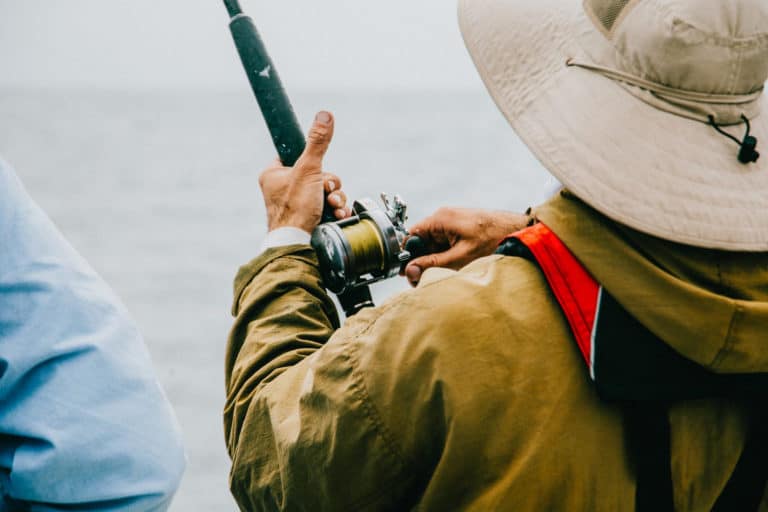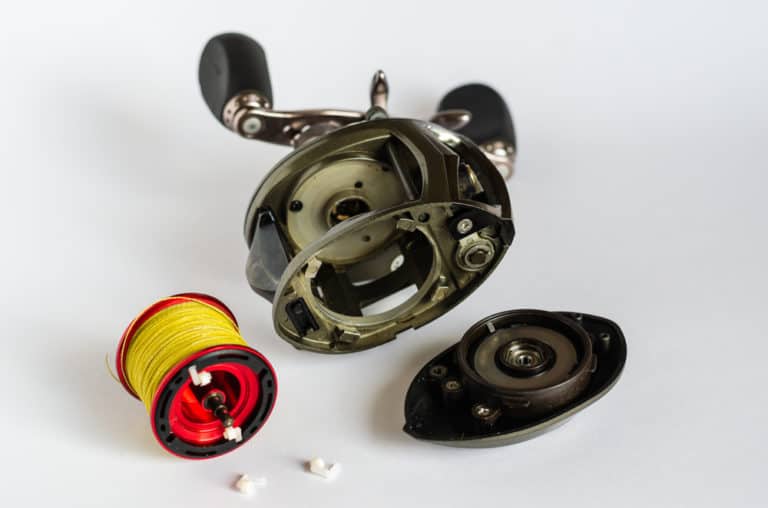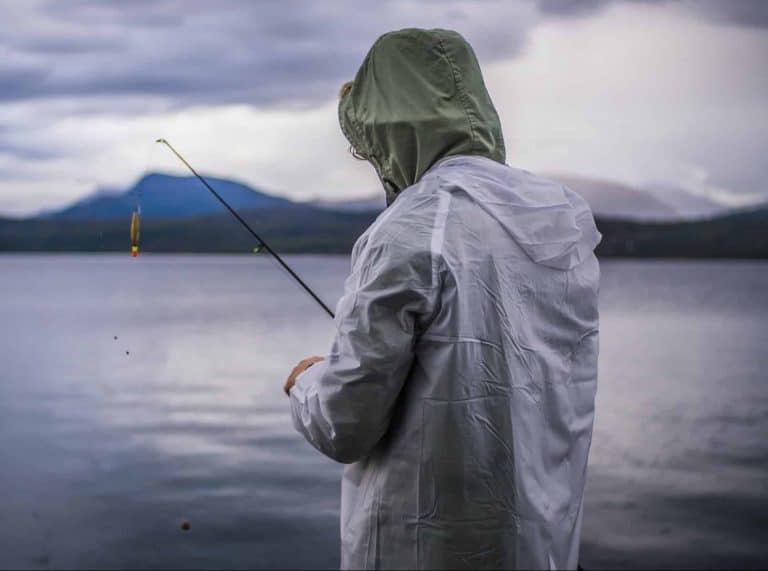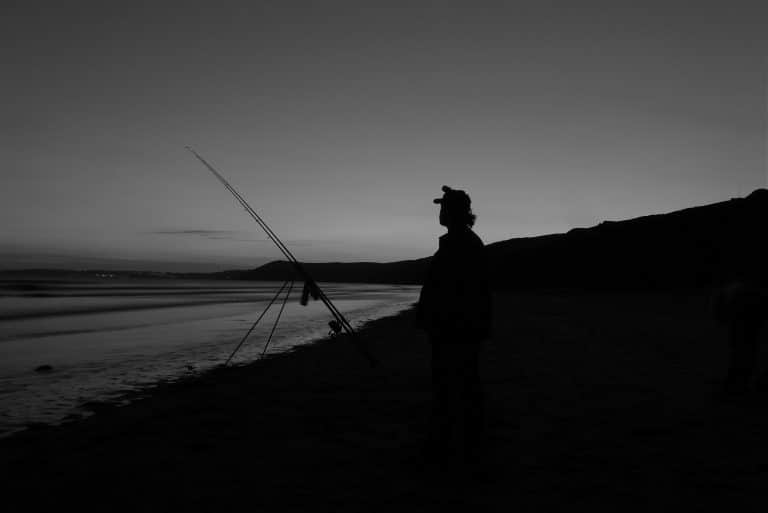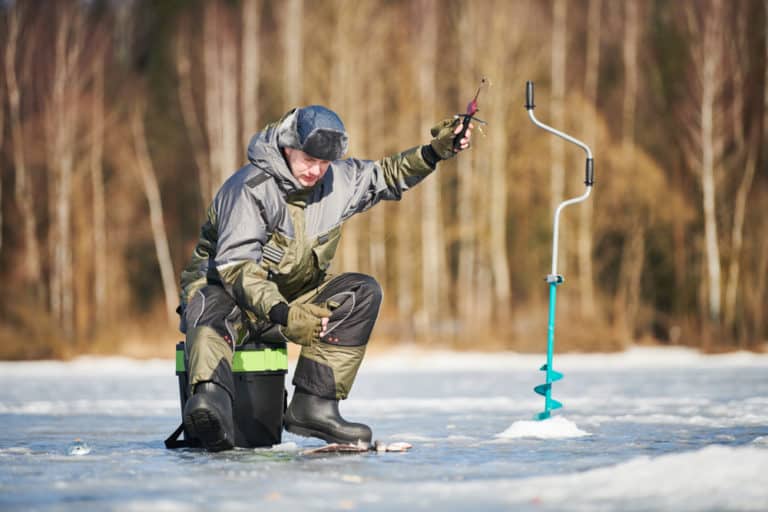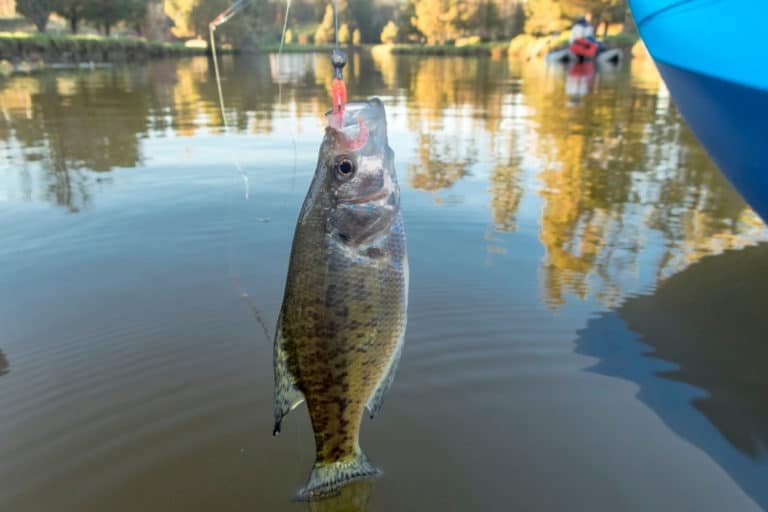How To Choose The Best Fishing Line Color
All anglers (including myself) are always trying to gain an edge on the fish they are targeting. Whether it includes using the strongest scented bait, life-like lures, or a new rig. But, what about fishing line color?
Many brands claim that their line is low-viz, or is ‘natural camo’ colored. Does it matter? And, can fish see fishing line?
Throughout this post, I will be diving into the different color choices, and line options to help answer common questions and myths about selecting the right fishing line color.
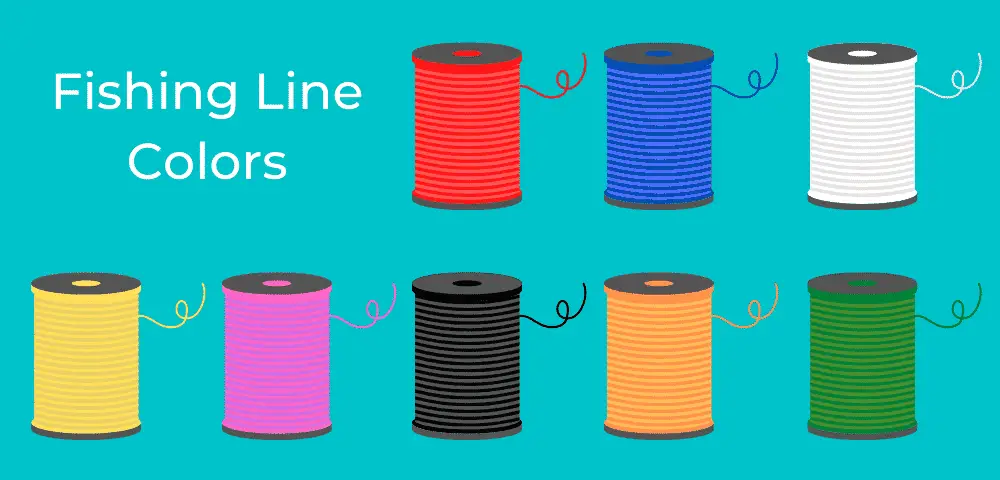
Table of Contents
Can fish see fishing line?
This question has probably been around ever since humans started to fish. And, you can understand why. Fishing line is one of the most important components of your entire set-up.
We optimize our fishing lines for strength, abrasion resistance, sensitivity, and many more factors, so why not fish with the best fishing line color?
There is no doubt in my mind that fish do see some easy-to-spot fishing lines. Some fish have really good eyesight, and they are able to spot my lures and other prey-fish prior to a strike.
But, and it’s a big but, do fish consciously think “that’s a fishing line” or “that person is just trying to catch me”… probably not. To them, it’s likely just something else in the water.
This doesn’t mean that it won’t spook them, it’s just very difficult to say it will, or it won’t.
Personally, fishing line color choices come a lot down to personal confidence. If you like using a high-viz braided line that you can see above the water, use one, and if you don’t like the thought of it spooking fish… use a fluorocarbon or clear mono leader.
Or, just stick with clear mono, or fluoro. It really is that simple.
Low-viz vs High-viz
Low-viz and high-viz are phrases used by line manufactures, to give you some idea of how the line will perform both in and out of the water with regards to how easy it is seen.
Low-viz lines can be both leaders and mainlines, you usually see them as monofilament or fluorocarbon, however, some braids are now classed as low-viz and they adopt colors like red, pink, yellow, and orange, which start to lose their colors as they sink deeper into the water.
Lower visibility braided lines aren’t a necessity nowadays with many anglers opting to tie a strong fluoro leader onto their mainline to lose all worry of the fish getting spooked by their line.
High-viz lines do have their place, and when coupled with a fluorocarbon leader they can be much easier to fish with. Mainly because you can see the line above the surface of the water. You can see exactly where your cast landed, and where your lure or bait has been placed.
High-viz lines allow anglers to know exactly where their lures are which makes it much easier to sight-fish. Whilst using jigs and slow-moving baits, it is often quicker to see the bite via the line jerking in the water, than it is to feel it through the rod. This means you can set the hook early and be on to a winner.
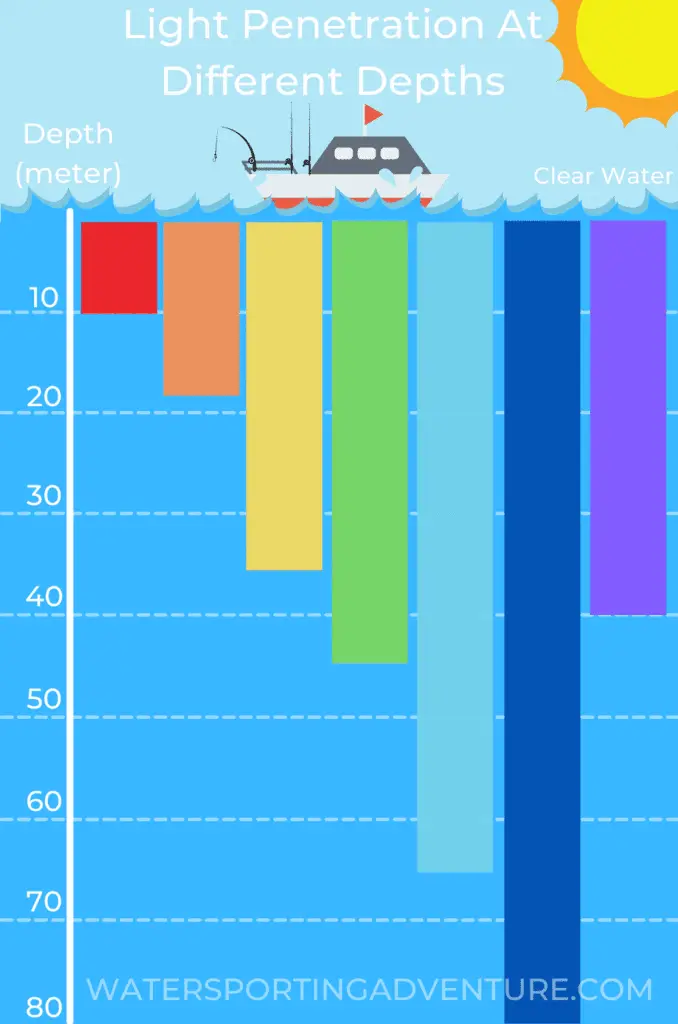
Share this Image On Your Site:
Monofilament Fishing Line Color
Whilst shopping around for different monofilament fishing lines, you’ll soon realize that almost all brands claim to either be low-viz, invisible or claim that the line can be seen easily above the water’s surface for early bite detection.
Below we will break down the most popular monofilament line colors and the different benefits of each.
Clear
Clear monofilament is the most popular choice of mono line amongst anglers. It is a translucent line and has low-visibility in water, although not as low-viz as fluorocarbon.
If you are going to be using the same spool and reel for multiple fishing applications and locations, you can’t go wrong with using clear fishing line.
Check out our recommendations for the best monofilament line.
Yellow
Yellow fishing lines are often regarded as high-visibility. They are great if you want to know exactly what is going on above the surface. If you are using jigs and spinning, your brightly colored line is easy to spot above the water, so you’ll know exactly where your lure is.
High-viz lines also work well for early bite detection, you will see your yellow line thrash and jerk around before you feel the bite at your rod. This can be good for getting your hook set early.
Yellow does have its drawbacks, however. If you aren’t fishing deep (where yellow colors become less visible in water), then there is no doubt it is easier to see in clear water. It’s still up for debate as to whether this actually spooks the fish or not, but if you want to be sure, yellow lines are best used with a mono or fluorocarbon leader.
Red
Red lines are becoming more popular due to the long wavelength of red light, which causes it to lose it’s color at around 5-15ft deep. Some anglers have carried out their own personal tests, by performing an experiment on this myth. And, it’s true, red does lose it’s color in water, however it isn’t invisible, instead it seems to turn a dark brown/black color.
Therefore, red is still not the best option in ultra-clear water, but it can be used in a wide range of lakes, ponds, streams, etc. due to most having a naturally dark tint to the water.
Green
Greenline is a popular choice for mono and braid alike. Most waters will have a natural green tint to them, or a backdrop of green vegetation, and rocks. This does help the green line blend into the natural surroundings, although in ultra-clear waters with a light backdrop (like white sand), dark green colors will be easy to spot.
Blue
Blue colors stay visible in waters to very deep depths. But, that doesn’t mean you shouldn’t use a blue line. In fact, light blue mono is a very popular choice for fishing in clear waters.
Some sea anglers will opt for blue due to the light blue backdrop of the ocean, unlike murky rivers or lakes (where a blue line would be more visible than green or yellow), blue will blend into the ocean surroundings very well. Especially the light blue mono (which is translucent) as opposed to the solid blue braid.
Braided Fishing Line Color
Braided fishing line is often the go-to choice for many anglers due to its small diameter, strong knots, high strength:diameter ratio and it’s high sensitivity. But how does it hold up in terms of visibility?
Braided line is the most visible line compared to fluorocarbon or monofilament. Whilst fishing with braid most anglers will adopt the use of a fluorocarbon leader, attached to the braided mainline.
This gives you all the sensitivity benefits and strength of a braided line, with the low-visibility of a fluoro leader line.
Because braid is made from fibers, often woven together, light cannot pass through the line, in the same manner, it will a single strand of translucent material, like mono and fluoro lines. This doesn’t mean it’s highly visible in the water, you just have to assess where you are fishing and the water color.
Camo green, is a very popular choice of braided line, as most anglers will be fishing in ponds, lakes and streams which have a green tint to the water.
We have covered braided line many times on this site, you can check out our top selections for the best braided fishing line.
Fluorocarbon Fishing Line Color
Fluoro is regarded as the least visible fishing line, but is it true? In my experience, yes, fluoro line practically vanishes underwater, and there is some science behind it.
Clear Fluorocarbon
Fluorocarbon leader lines are specially formulated to have a refractive index similar to that of water. This means that light passes through the line in virtually the same manner as it passes through water, and therefore it’s very difficult to see the difference between the line color and the water’s color (making it invisible).
This is why fluoro lines are the best choice in crystal clear waters, or used as a leader line alongside a braided mainline.
Fluorocarbon is mass produced in a clear color, only a handful of brands will also sell line with a slight tint of color to it. This color is usually pink fluorocarbon, for reasons I’ll dive into below.
Pink Fluorocarbon
Pink Fluorocarbon fishing line is used because of the way water absorbs different wavelengths of light. The light with the longest wavelengths, and lowest energy are absorbed first.
Red is the first to be absorbed, then orange & yellow, and even deeper into the water green will disappear.
Red will disappear at around 15ft but starts to noticeably lose its color at around 5ft. This is why a fluorocarbon line with a shade of pink is used, as it will not appear pink, or red at all underwater, it should just blend in with the water itself.
You can check out our top picks for the best fluorocarbon fishing line.
Final Words
Fishing line color is one of those aspects of fishing that is always up for debate. You often hear stories of someone netting bass after bass, and they report their success is down to their new fishing line which they bought in green, yellow, orange, etc.
The reality is, yes, fishing line color might play a pivotal role in preventing the fish from getting spooked. But there are so many other factors that also need to be taken into account on the day. Like your location, bait, lures, fishing method, the time of day you are fishing, tide level… the list goes on.
I mentioned this earlier, but for me, line color plays the biggest role when it comes to my confidence. If I’m fishing using only a high-viz yellow line (I like this line whilst using lures and jigs), I sometimes worry it will spook the fish, and suddenly all of my bad luck blames the line choice when it could be something else.
To keep my confidence intact, I use a low-viz fluorocarbon leader line, which I know is practically invisible in the water, and I use this set-up with all of my braided spools, purely for peace of mind whilst fishing.

